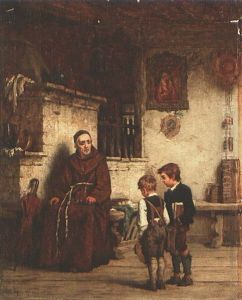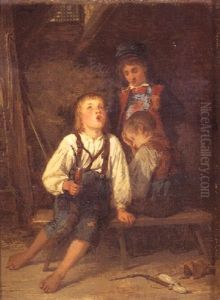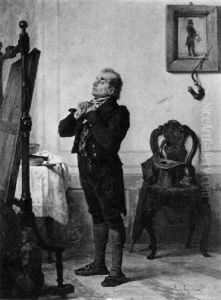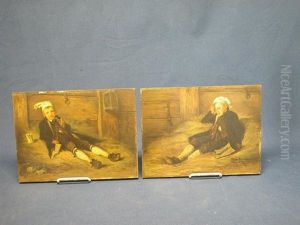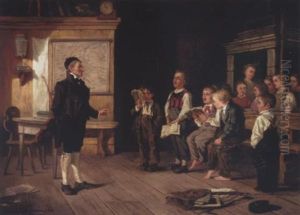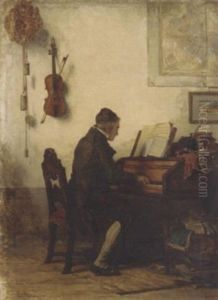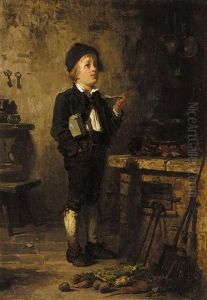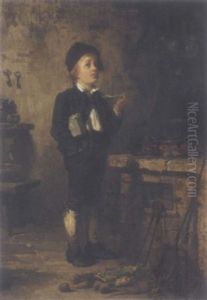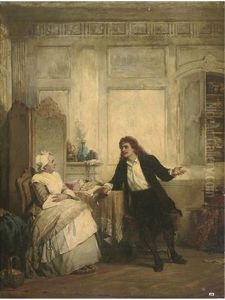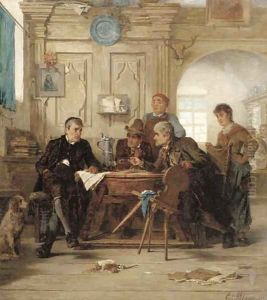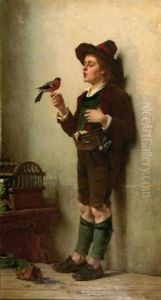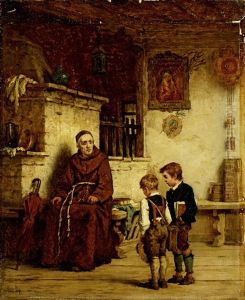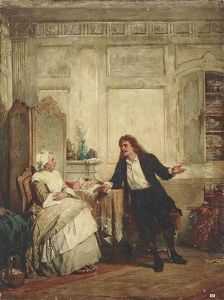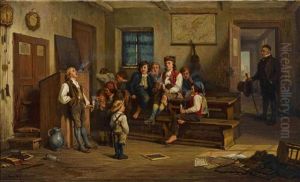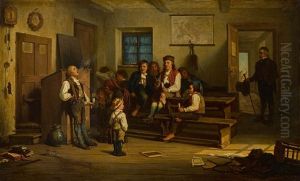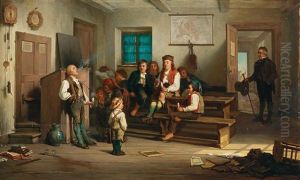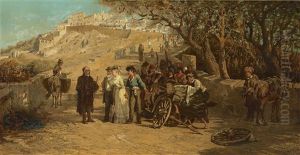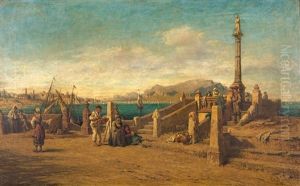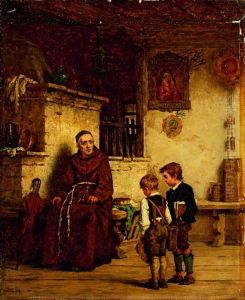Carl Bernhard Schloesser Paintings
Carl Bernhard Schloesser, born in 1832 in Germany, was a notable figure in the world of 19th-century European art, known particularly for his genre paintings and illustrations. His work, characterized by a detailed and realistic portrayal of scenes from everyday life as well as historical and literary subjects, reflects the broader movements of Realism and Naturalism that were prevalent during his time. Schloesser's art provides a window into the social and cultural dynamics of the period, often focusing on the lives of ordinary people with a compassionate and sometimes humorous eye.
Schloesser received his formal art education at the Academy of Fine Arts in Karlsruhe, a center for artistic training in Germany. After completing his studies, he embarked on a career that would see him travel and work in various European countries, including a significant period in Paris, which was then the epicenter of the art world. His time in Paris exposed him to the works of contemporary French artists and the emerging Impressionist movement, influences that would subtly inform his own artistic style.
Despite the allure of Paris, Schloesser eventually returned to Germany, where he continued to develop his craft and gain recognition for his contributions to art. Throughout his career, Schloesser exhibited his works in numerous shows, including those at the prestigious Berlin Academy, and received commendations for his artistic achievements. His paintings were sought after by collectors and admired for their attention to detail, vivid portrayal of characters, and ability to evoke the atmosphere of the scenes depicted.
Carl Bernhard Schloesser's legacy is that of a skilled painter and illustrator who captured the spirit of his age with sensitivity and insight. His death in 1914 marked the end of a career that had spanned over six decades, during which he witnessed significant transformations in the art world and society at large. Schloesser's works remain a valuable part of European art history, appreciated for their historical value and artistic merit.
